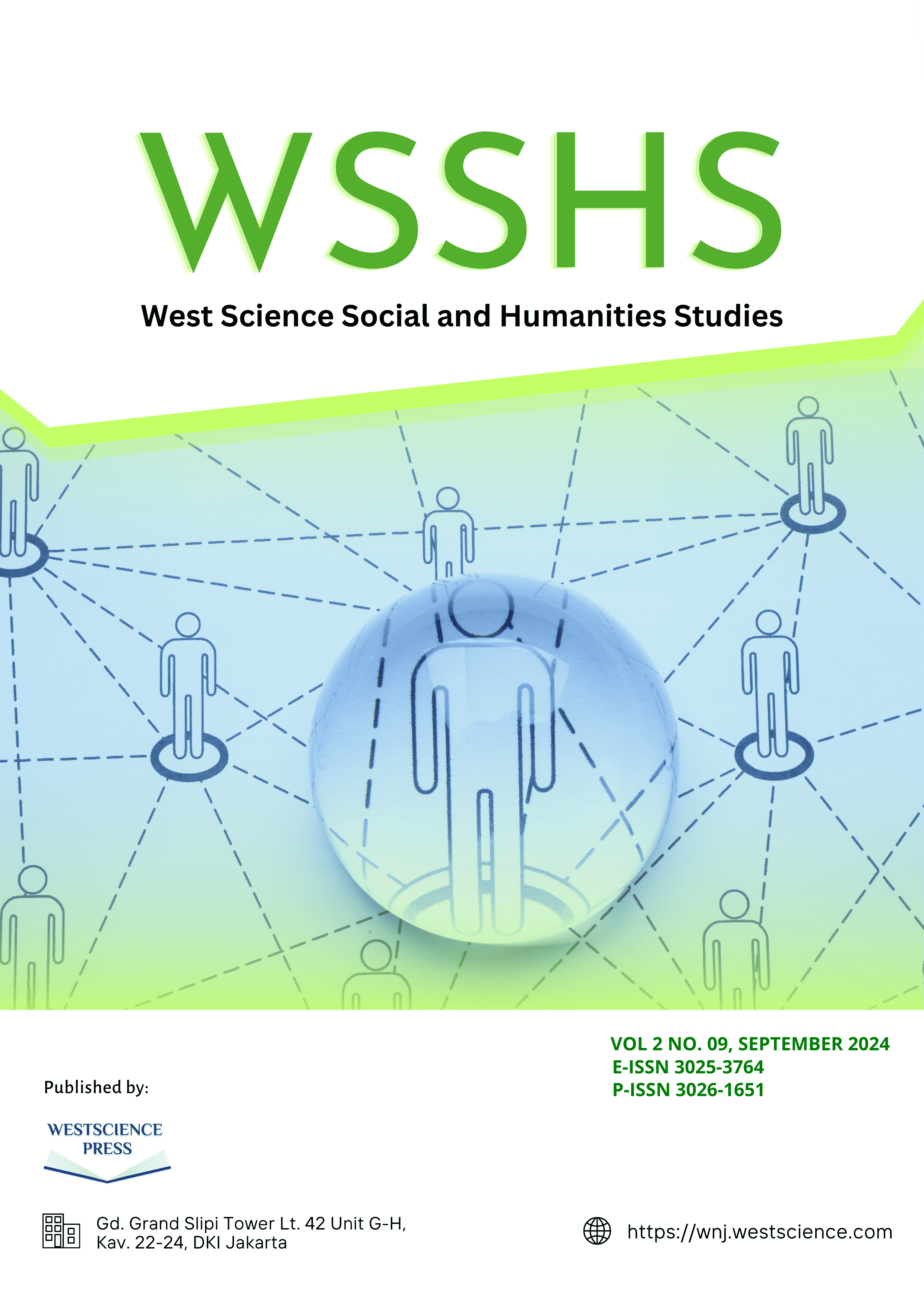Global Trends in Educational Program Evaluation: Bibliometric Analysis for Education Quality Improvement
DOI:
https://doi.org/10.58812/wsshs.v2i09.1268Keywords:
Educational Program Evaluation, Quality Management, Accountability in Education, Bibliometric AnalysisAbstract
This study conducts a comprehensive bibliometric analysis to map global trends in educational program evaluation, focusing on research outputs, thematic evolution, and key scholarly networks from 2000 to 2024. Utilizing citation metrics, yearly publication graphs, and VOSviewer visualizations of keyword co-occurrences, the research identifies significant shifts in thematic focus, delineates interconnected research clusters, and highlights the influential contributions within the field. The analysis reveals a notable increase in publications related to educational evaluation during the early 2000s with a peak between 2010 and 2018, indicating heightened research interest coinciding with global educational reforms. Thematic clusters around "educational program," "quality management," and "leadership" underscore a multidisciplinary approach integrating educational theory with business management practices. This study underscores the field's adaptation to evolving educational needs and points towards emerging areas requiring further exploration, such as digital evaluation techniques and program-specific assessments.
References
A. W. Wiseman and D. P. Baker, “The worldwide explosion of internationalized education policy,” in Global trends in educational policy, Emerald Group Publishing Limited, 2005, pp. 1–21.
W. W. Hood and C. S. Wilson, “The literature of bibliometrics, scientometrics, and informetrics,” Scientometrics, vol. 52, pp. 291–314, 2001.
M. Chen, Education nation: Six leading edges of innovation in our schools. John Wiley & Sons, 2010.
R. C. Smith, O. S. Iversen, and M. Hjorth, “Design thinking for digital fabrication in education,” Int. J. Child-Computer Interact., vol. 5, pp. 20–28, 2015.
V. Iyer et al., “No unexpected CRISPR-Cas9 off-target activity revealed by trio sequencing of gene-edited mice,” PLoS Genet., vol. 14, no. 7, p. e1007503, 2018.
D. L. Stufflebeam, “CIPP evaluation model checklist,” 2007.
M. Scriven, Evaluation thesaurus. Sage Publications, 1991.
R. N. Broadus, “Toward a definition of ‘bibliometrics,’” Scientometrics, vol. 12, pp. 373–379, 1987.
W. A. Shewhart and W. E. Deming, Statistical method from the viewpoint of quality control. Courier Corporation, 1986.
N. R. Council, B. on S. Education, N. C. on S. E. Standards, and Assessment, National science education standards. National Academies Press, 1995.
D. M. Mertens, Research and evaluation in education and psychology: Integrating diversity with quantitative, qualitative, and mixed methods. Sage publications, 2023.
P. Ramsden, “Learning to teach in higher education.” RoutledgeFalmer, 2003.
M. Q. Patton, “How to use qualitative methods in evaluation,” Saint Paul, 1987.
R. B. Woodruff, “Customer value: the next source for competitive advantage,” J. Acad. Mark. Sci., vol. 25, pp. 139–153, 1997.
R. B. Barr and J. Tagg, “From teaching to learning—A new paradigm for undergraduate education,” Chang. Mag. High. Learn., vol. 27, no. 6, pp. 12–26, 1995.
M. J. Benner and M. L. Tushman, “Exploitation, exploration, and process management: The productivity dilemma revisited,” Acad. Manag. Rev., vol. 28, no. 2, pp. 238–256, 2003.
T. R. Guskey, Evaluating professional development. Corwin Press, 2000.
K. Bush, D. R. Kivlahan, M. B. McDonell, S. D. Fihn, K. A. Bradley, and A. C. Q. I. P. (ACQUIP, “The AUDIT alcohol consumption questions (AUDIT-C): an effective brief screening test for problem drinking,” Arch. Intern. Med., vol. 158, no. 16, pp. 1789–1795, 1998.
K. Leithwood, K. Seashore, S. Anderson, and K. Wahlstrom, “Review of research: How leadership influences student learning,” 2004.
Downloads
Published
Issue
Section
License
Copyright (c) 2024 Loso Judijanto, Heni Widyaningsih, Desty Endrawati Subroto, Muhammad Arsyad, Erik Novianto

This work is licensed under a Creative Commons Attribution-ShareAlike 4.0 International License.

















 Instagram
Instagram 